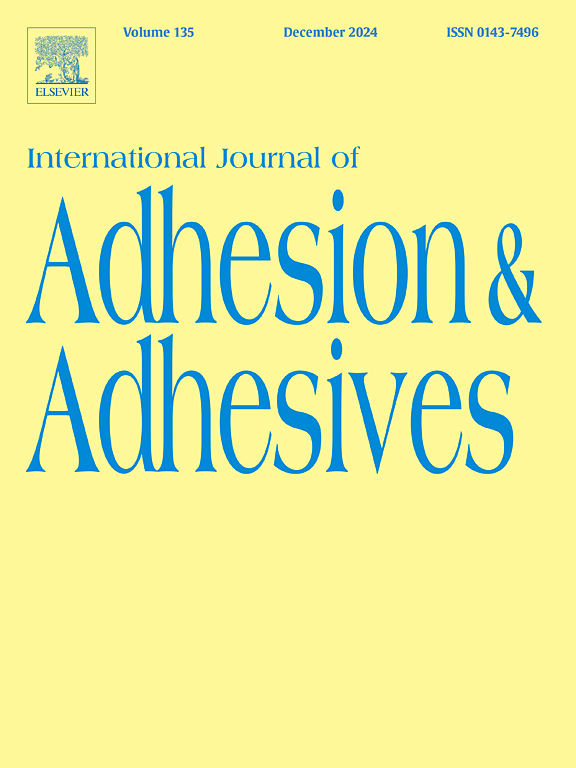The effect of urea-formaldehyde adhesive modification with diisocyanate-functionalized nanocellulose on the properties of particleboard
IF 3.5
3区 材料科学
Q2 ENGINEERING, CHEMICAL
International Journal of Adhesion and Adhesives
Pub Date : 2024-10-08
DOI:10.1016/j.ijadhadh.2024.103850
引用次数: 0
Abstract
In this paper, a nanocrystalline cellulose (NCC) functionalized with 4,4′-diphenylmethane diisocyanate (MDI) was used as a modifier for urea-formaldehyde (UF) adhesive in particleboard production. The applied method of NCC functionalization with diisocyanate has not been previously studied in research on wood-based materials. Chemical structure of MDI-NCC evaluated with Fourier transform infrared spectroscopy (FTIR) demonstrated some significant changes indicating that the functionalization was effective. No change in crystallinity caused by the modification was noted based on the lateral order index and total crystallinity index. Hydrophilicity of NCC was reduced due to the functionalization with MDI. Based on the differential scanning calorimetry (DSC) results, it was found that the reactivity of the resin was improved by the addition of NCC, and moreover, the effect was even more noticeable when the MDI-NCC was introduced. Properties of manufactured particleboards such as density, water absorption and formaldehyde content were not affected by the resin reinforcement. In turn, the modification of NCC with MDI allowed to increase the strength and reduce swelling of the particleboards more significantly than in the case of a neat NCC. It indicates that application of diisocyanate-functionalized NCC has great potential for the use as the UF resin modifier in particleboard production.
用二异氰酸酯功能化纳米纤维素改性脲醛胶粘剂对刨花板性能的影响
本文使用 4,4′-二苯基甲烷二异氰酸酯(MDI)功能化的纳米结晶纤维素(NCC)作为刨花板生产中脲醛(UF)胶粘剂的改性剂。以前在人造板研究中还没有研究过用二异氰酸酯对 NCC 进行官能化的应用方法。傅立叶变换红外光谱(FTIR)对 MDI-NCC 的化学结构进行了评估,结果显示其发生了一些显著变化,表明官能化是有效的。根据横向阶数指数和总结晶度指数,改性没有引起结晶度的变化。用 MDI 进行官能化后,NCC 的亲水性降低。根据差示扫描量热法(DSC)的结果,可以发现添加 NCC 后树脂的反应性得到了改善,而且在引入 MDI-NCC 后效果更加明显。人造刨花板的密度、吸水性和甲醛含量等性能不受树脂增强剂的影响。反过来,与纯净的 NCC 相比,用 MDI 对 NCC 进行改性可以更显著地提高刨花板的强度并减少膨胀。这表明,二异氰酸酯功能化 NCC 在刨花板生产中用作 UF 树脂改性剂具有巨大潜力。
本文章由计算机程序翻译,如有差异,请以英文原文为准。
求助全文
约1分钟内获得全文
求助全文
来源期刊

International Journal of Adhesion and Adhesives
工程技术-材料科学:综合
CiteScore
6.90
自引率
8.80%
发文量
200
审稿时长
8.3 months
期刊介绍:
The International Journal of Adhesion and Adhesives draws together the many aspects of the science and technology of adhesive materials, from fundamental research and development work to industrial applications. Subject areas covered include: interfacial interactions, surface chemistry, methods of testing, accumulation of test data on physical and mechanical properties, environmental effects, new adhesive materials, sealants, design of bonded joints, and manufacturing technology.
 求助内容:
求助内容: 应助结果提醒方式:
应助结果提醒方式:


